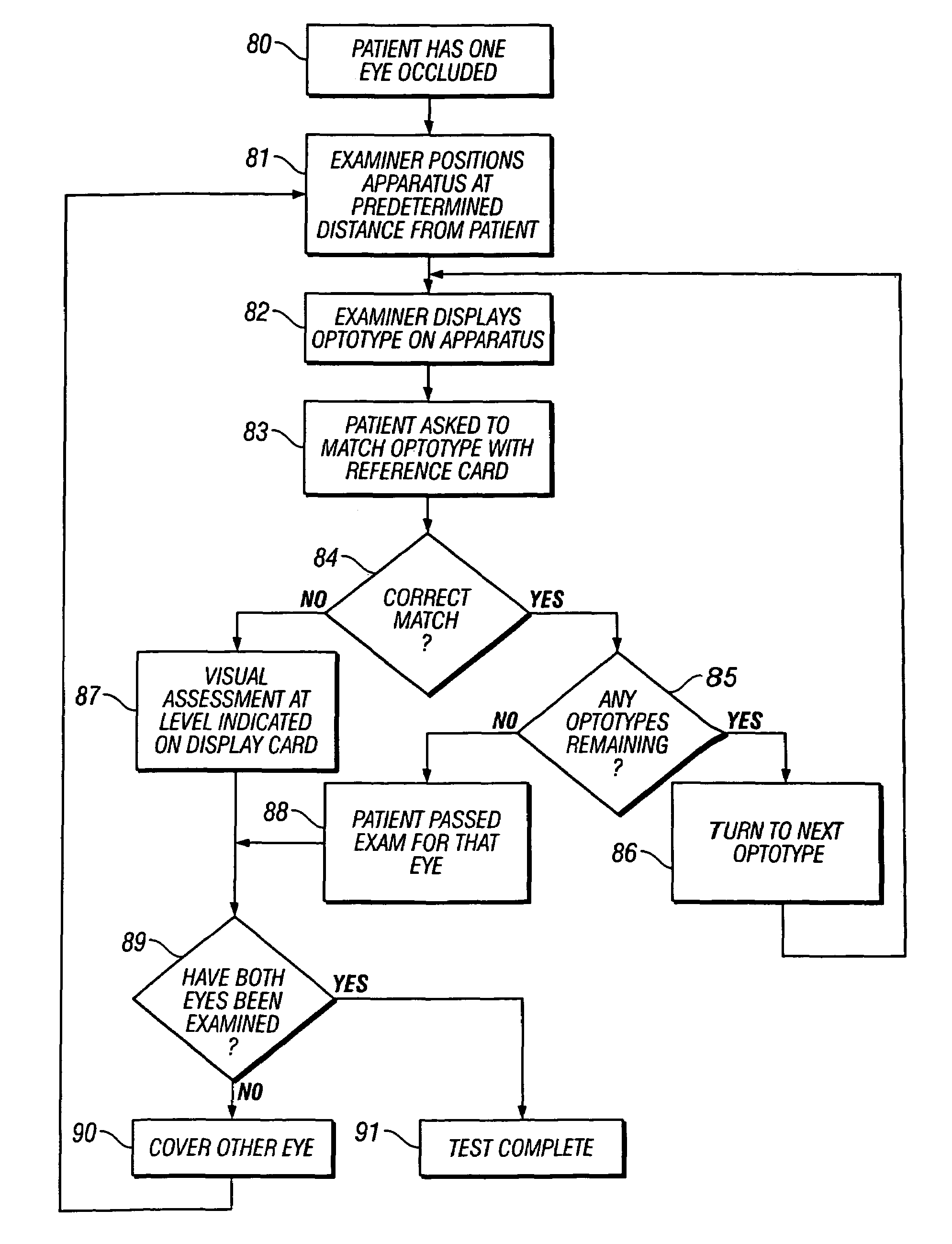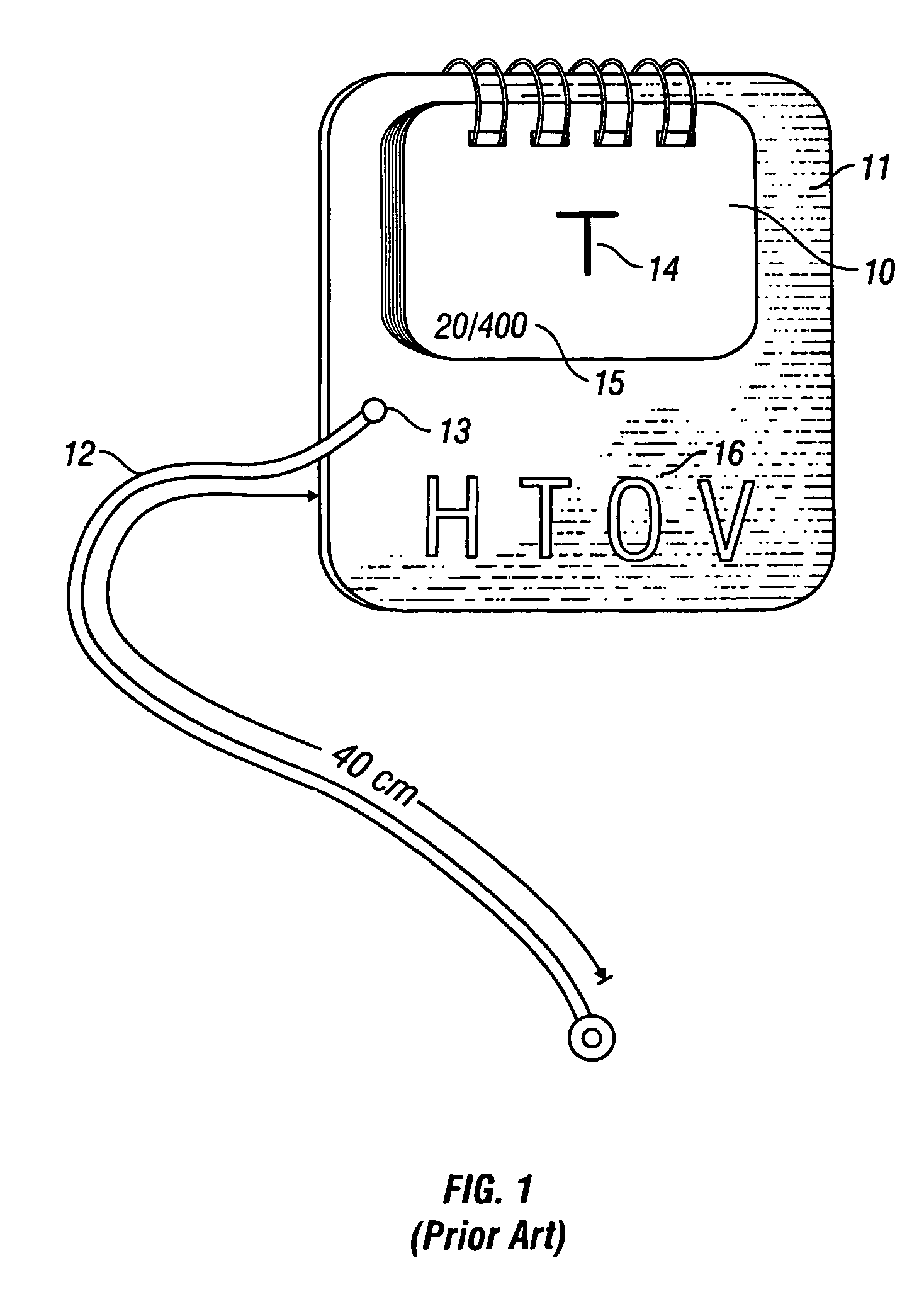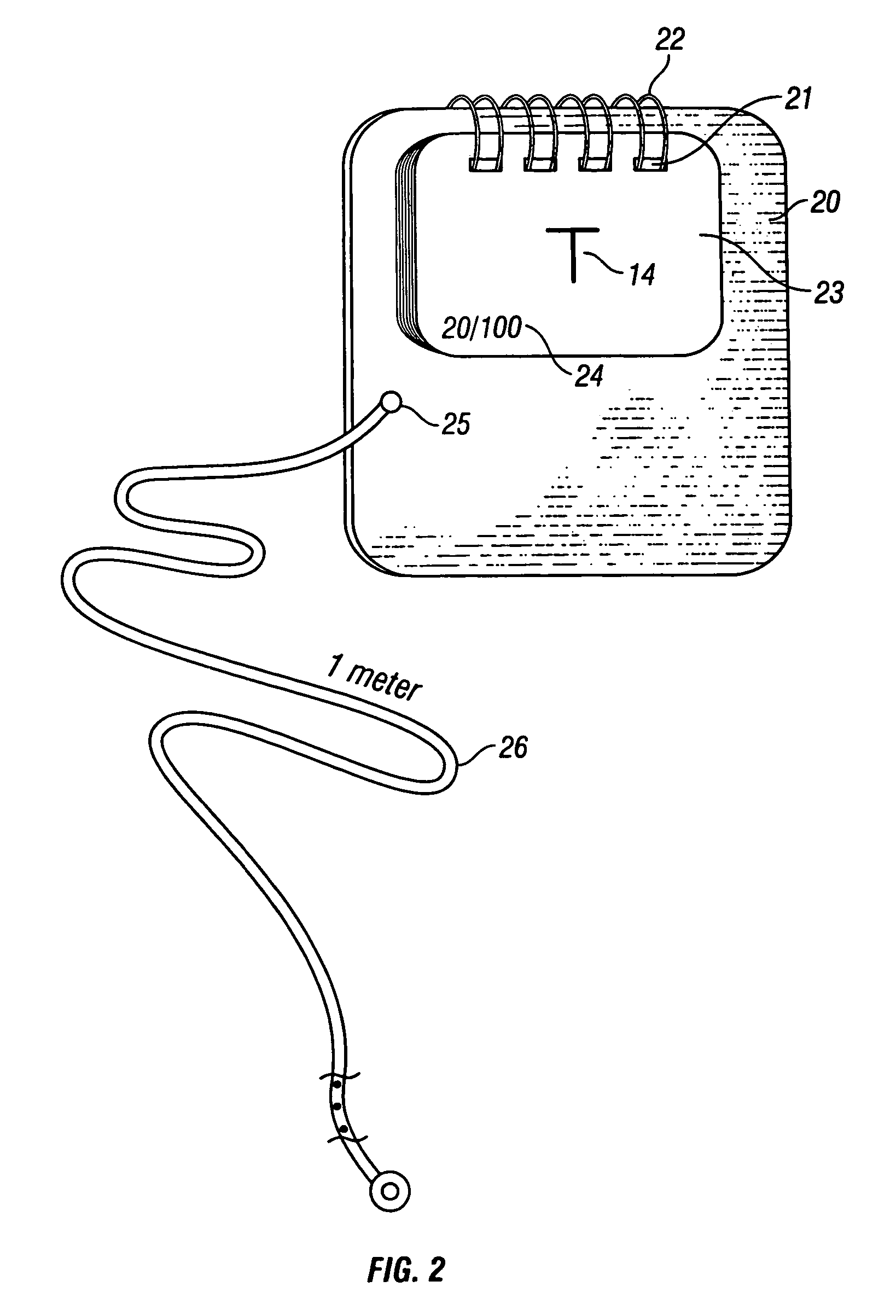Method and apparatus for performing vision screening
a technology of monocular vision and screening method, applied in the field of visual screening system and method, can solve the problems of difficult diagnosis of vision disorders, child may not realize, or otherwise not be able to communicate, that the child's eyesight is outside of a normal range, and achieve the effect of convenient transportation and storag
- Summary
- Abstract
- Description
- Claims
- Application Information
AI Technical Summary
Benefits of technology
Problems solved by technology
Method used
Image
Examples
Embodiment Construction
[0039]According to an embodiment of the present invention, a compact, portable vision screening apparatus is used to screen pre-school aged children for vision disorders, such as amblyopia. The apparatus includes a flip chart of display cards and a string of a predetermined length. An optotype, such as a letter or a symbol, is imprinted on each card. The cards are arranged in the flip chart in a progression of increasingly smaller sizes, calibrated to provide an assessment of visual acuity (e.g., 20 / 100, 20 / 50, 20 / 30, etc.) according to a predetermined distance between the chart and the child's eye when in use. The passing acuity of 20 / 30 has been specifically determined to effectively eliminate the possibility of significant amblyopia in the tested eye. A separate reference card is provided with optotypes that match those displayed in the flip chart. The portable vision screening apparatus is lightweight, compact, inexpensive to manufacture, and easy to use.
[0040]In use, an examine...
PUM
 Login to View More
Login to View More Abstract
Description
Claims
Application Information
 Login to View More
Login to View More - R&D
- Intellectual Property
- Life Sciences
- Materials
- Tech Scout
- Unparalleled Data Quality
- Higher Quality Content
- 60% Fewer Hallucinations
Browse by: Latest US Patents, China's latest patents, Technical Efficacy Thesaurus, Application Domain, Technology Topic, Popular Technical Reports.
© 2025 PatSnap. All rights reserved.Legal|Privacy policy|Modern Slavery Act Transparency Statement|Sitemap|About US| Contact US: help@patsnap.com



